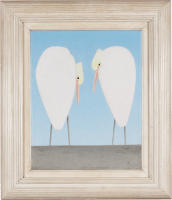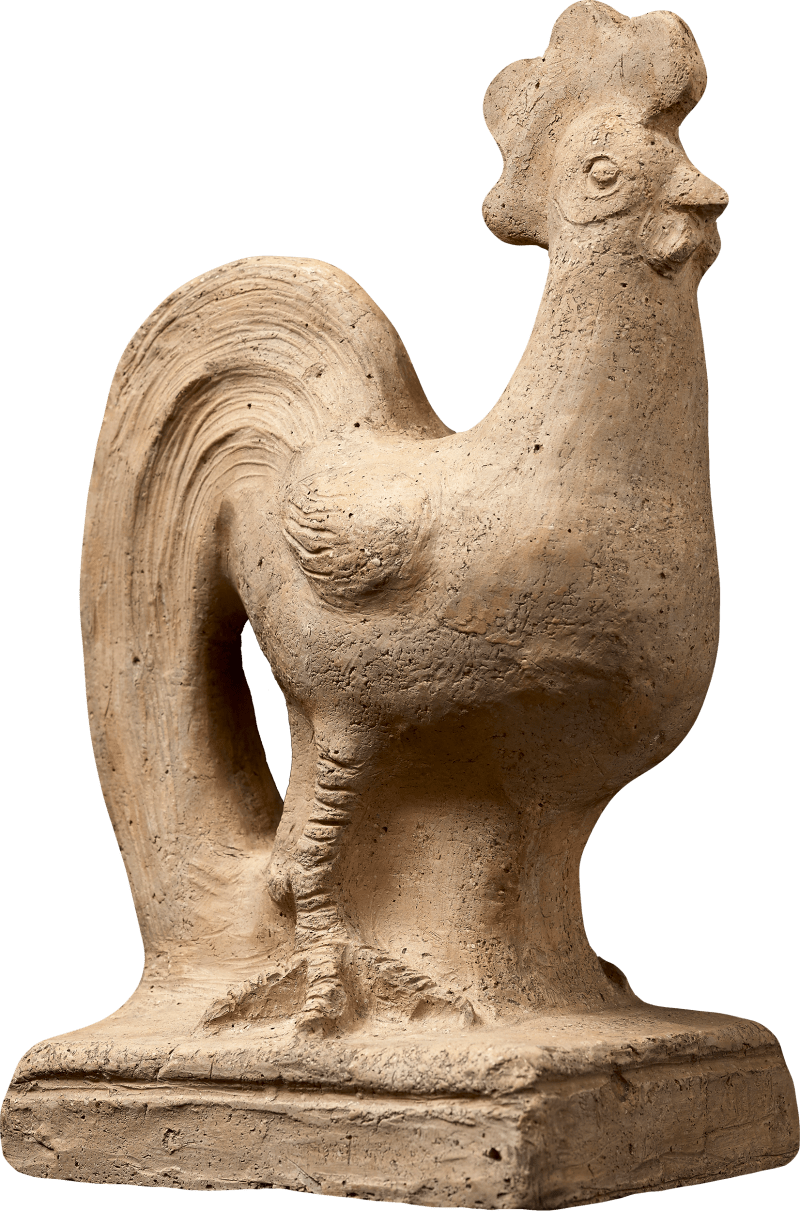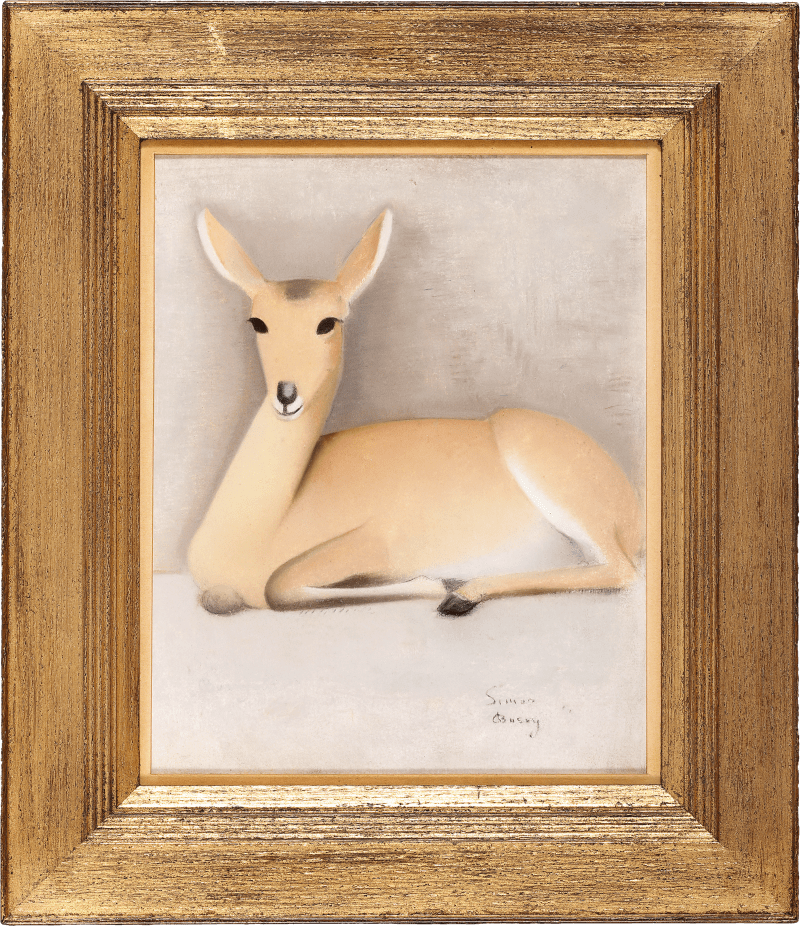Few works exemplify Simon Bussy’s idiosyncratic simplification of flora and fauna as profoundly as the present work. He was a devoted admirer of the natural world in all its manifestations and his passion is evident through the knowledge and honesty with which he interprets his subjects. His precise working method, as evidenced here, was admired by the likes of Duncan Grant, whom he heralded as ‘Mon Maitre’ (‘my master’).
André Gide, the French author, a lifelong friend of Bussy and previous owner of this painting, described Busy as ‘authentic inside and out, which enables him to be at home no matter where, and particularly with animals and plants.’[1] Authenticity and honesty pervade his oeuvre, particularly in this splendent painting. Bussy spent hours studying his subjects at the London Zoo or in Vincennes Park and even longer distilling their forms and contours in precise and painstaking detail. Gide described his secluded process: ‘he shuts himself up with his collection of...
Few works exemplify Simon Bussy’s idiosyncratic simplification of flora and fauna as profoundly as the present work. He was a devoted admirer of the natural world in all its manifestations and his passion is evident through the knowledge and honesty with which he interprets his subjects. His precise working method, as evidenced here, was admired by the likes of Duncan Grant, whom he heralded as ‘Mon Maitre’ (‘my master’).
André Gide, the French author, a lifelong friend of Bussy and previous owner of this painting, described Busy as ‘authentic inside and out, which enables him to be at home no matter where, and particularly with animals and plants.’[1] Authenticity and honesty pervade his oeuvre, particularly in this splendent painting. Bussy spent hours studying his subjects at the London Zoo or in Vincennes Park and even longer distilling their forms and contours in precise and painstaking detail. Gide described his secluded process: ‘he shuts himself up with his collection of studies and by a kind of patient and lover-like distillation evolves from them his paintings.’[2] The resultant works express the essence of his subjects with a clarity of vision unparalleled by his contemporaries.
Until recently, this work remained in the collection of Gide and his daughter, Catherine. Gide met Dorothy, Simon’s wife, in 1918 and became his translator. She fell in love with him and remained infatuated with him throughout her marriage to Bussy; thankfully, the Bloomsbury group was inclined to love in triangles, and the three creatives remained lifelong friends.[3] After the Second World War, Gide wrote: ‘Only the all-enveloping affection of my friends the Bussys warms me a bit and keeps me from despair.’[4]
[1] A. Gide, Oiseaux. Poissons, Fleurs et Animaux: An Exhibition of Paintings by Simon Bussy. London: The Leicester Galleries, 1949, p. 2.
[2] A. Gide, Oiseaux. Poissons, Fleurs et Animaux: An Exhibition of Paintings by Simon Bussy. London: The Leicester Galleries, 1949, p. 3.
[3] M. A. Caws, Bloomsbury and France. Oxford: Oxford University Press, 2000, p.331.
[4] A. Gide quoted in M. A. Caws, Bloomsbury and France. Oxford: Oxford University Press, 2000, p.341













